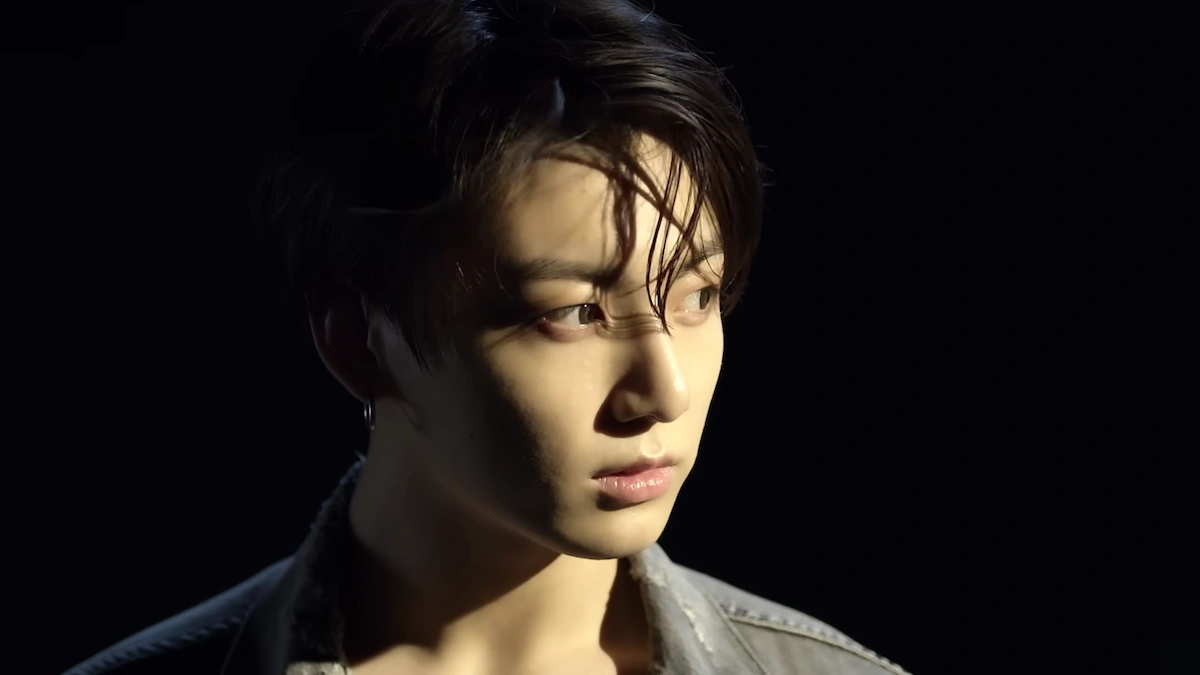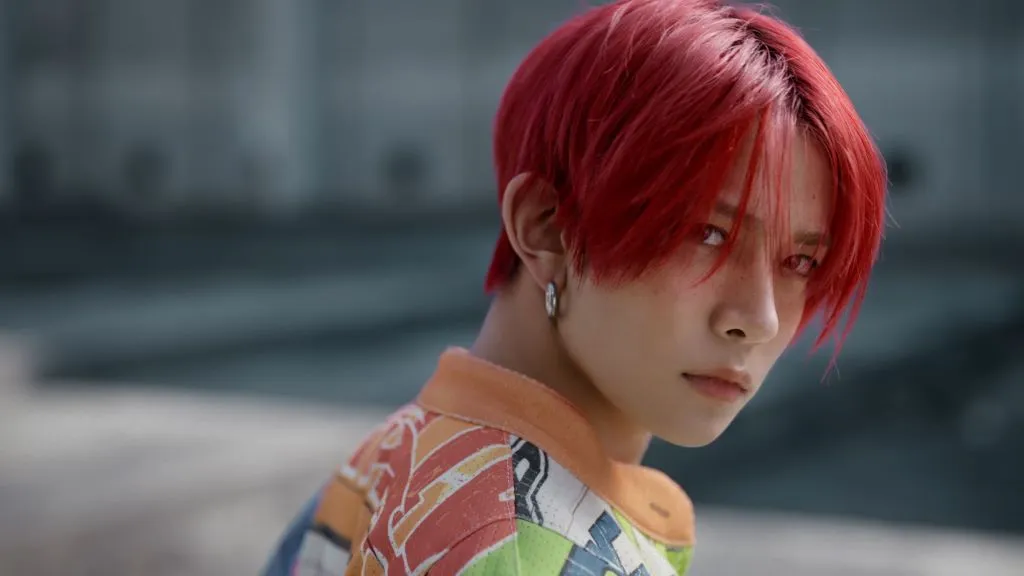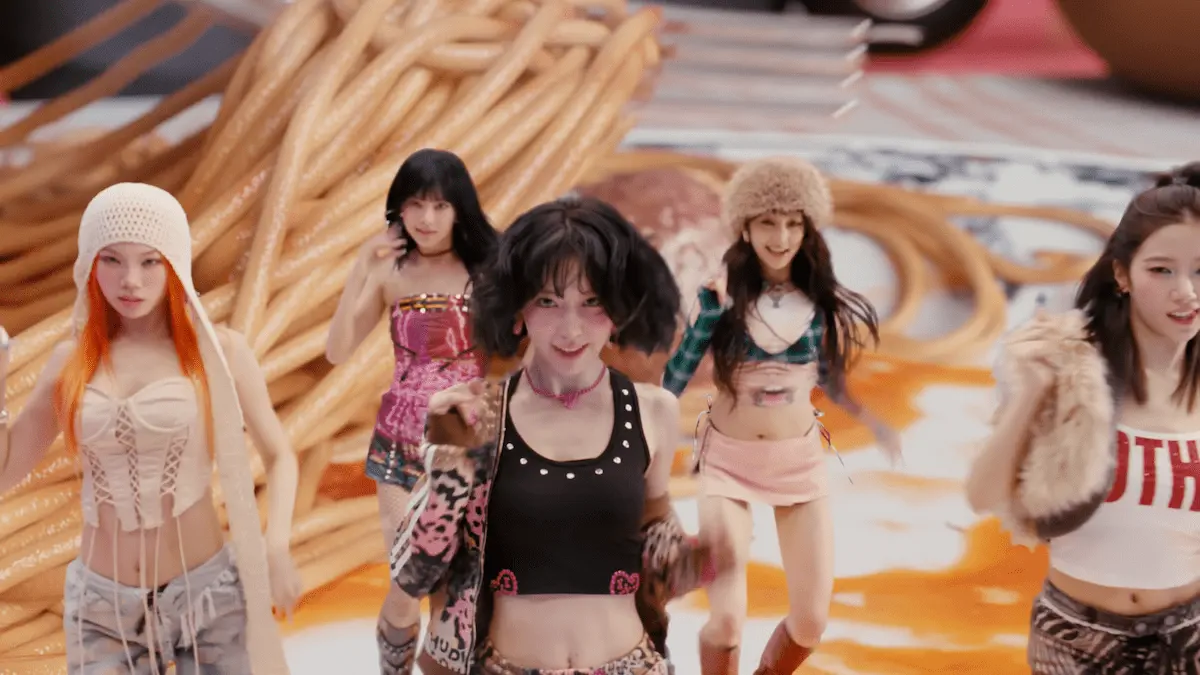BTS 'Fake Love' Explained: The Symbolism That Made 1.2 Billion People Stop Scrolling
I’ve watched Fake Love more times than I can count at this point, and I’m still catching details I missed. That’s not hyperbole—it’s the mark of a music video that was designed to reward obsessive rewatching.
Released on May 18, 2018, as the lead single from LOVE YOURSELF 轉 ‘Tear’, Fake Love became BTS’s highest-charting song at the time (#10 on Billboard Hot 100) and currently sits at over 1.3 billion views. But those numbers don’t tell you why people keep coming back to it seven years later.
Here’s what I think happened: BTS and their team made a deliberate choice to build a visual language so dense with symbolism that casual viewers would get the surface emotion (loss, betrayal, self-destruction) while dedicated fans could spend months decoding layers. The result is an MV that works on multiple levels simultaneously, which is harder to pull off than it sounds.
Let me walk you through what’s actually happening in this thing, because there’s a structure underneath the chaos.

Source: Official BTS YouTube (© Big Hit Entertainment)
Quick Navigation
- Why This Demands Multiple Watches
- Credits & Context
- The Core Concept: Fake Love as Self-Betrayal
- The Choreography Language
- The Symbolism System: Flower, Sand, Water
- Why Jungkook Is Always The Mirror
- The Interlude: The Turning Point Nobody Expected
- Why This Worked (When It Could've Been Pretentious)
- Q&A: Your Questions Answered
- Sources & Credits
Why This Demands Multiple Watches
First watch, you’re processing the obvious: the ruined hotel setting, the dark aesthetic, the weight of the emotion. The song hits hard lyrically—“I gave the world, just for you / I changed everything, just for you / But I don’t know me, who are you?”—and the visuals support that narrative straightforwardly enough.
Second watch, you start noticing patterns. Why does Jungkook keep appearing in mirror scenes? Why is that “see no evil, hear no evil, speak no evil” gesture repeated so deliberately? Why does the flower keep showing up?
Third watch, the structure becomes visible. There’s a narrative arc here that’s not immediately obvious. The MV isn’t just illustrating the lyrics—it’s telling a parallel story through choreography and symbolism.
What makes Fake Love different from most K-pop MVs (even elaborate ones) is that it operates like a puzzle. The pieces are all there in plain sight, but the picture only emerges when you understand how they fit together. That’s intentional design, not accidental complexity.
Credits & Context
Artist: BTS (방탄소년단)
Song: “Fake Love”
Album: LOVE YOURSELF 轉 ‘Tear’
Release: May 18, 2018
Agency: Big Hit Entertainment
Director: YongSeok Choi (Lumpens)
Choreographer: Son Sung Deuk, Quick Crew
Genre: Alternative Hip-Hop, Emo Rap
The Numbers That Mattered:
- #10 on Billboard Hot 100 (BTS’s highest at the time)
- 1.2B+ views (as of 2025)
- First Billboard Music Awards Top Social Artist performance (the one that broke the internet)
- Part of the LOVE YOURSELF series narrative
Context: This is the middle chapter of a three-part story (LOVE YOURSELF: Her → Tear → Answer). The overarching narrative is about learning to love yourself, but Tear specifically deals with the pain and destruction that comes from not loving yourself—from molding yourself into whatever someone else wants.
That context matters because Fake Love isn’t just about a bad relationship. It’s about self-betrayal. The “you” in the lyrics is as much the speaker’s own expectations as it is another person.
The Core Concept: Fake Love as Self-Betrayal
The genius of Fake Love’s concept is that it’s not about being deceived by someone else. It’s about deceiving yourself. The lyrics spell this out clearly, but the MV architecture reinforces it constantly.
The Ruined Hotel as Mental Space
The setting—an abandoned, decaying hotel—isn’t a literal location. It’s a psychological landscape. Each room represents a different aspect of the self that’s been damaged or neglected in pursuit of this “fake love.”
Watch the transitions at 0:45-1:10. Members move between rooms that have completely different aesthetics:
- V in a baroque room with classical paintings
- Jimin in a stark white space
- Jin with a blooming flower (that will later explode)
- Suga in a room consumed by flames
These aren’t random set changes. They’re different psychological states or memories, fragments of identity that have been compartmentalized and are now collapsing.
The hotel itself is falling apart—walls cracking, water flooding, fire spreading. That’s not external threat. That’s internal disintegration.
The Choreography Language
The choreography in Fake Love does specific narrative work that lyrics alone couldn’t achieve. Let me highlight the key sequences.
“See No Evil, Hear No Evil, Speak No Evil” (Chorus)
At 1:15-1:30, during every chorus, the members perform this gesture sequence: covering eyes, ears, mouth. It’s the most recognizable move from the entire MV, and it’s doing heavy lifting thematically.
In a relationship built on “fake love,” you can’t see the truth, you refuse to hear warning signs, and you don’t speak your authentic feelings. The gesture is both protection and prison. You’re silencing yourself to maintain the illusion.
The popping and locking technique used here—sharp contractions and extensions—creates a mechanical quality. You’re not human in this relationship. You’re a puppet performing the motions of love without the substance.
The Puppet Master (1:45-2:00)
At 1:52, Jimin stands center while the other members move in synchronized, puppet-like motions around him. Then the sequence gets dark:
- Arms reaching up (cry for help)
- Kneeling down (submission)
- Stabbing motion toward their own chests
- Final throat-cutting gesture
I’ve seen various interpretations of this sequence—suicide, silencing, the death of authenticity. What matters is that it’s self-inflicted violence. Not violence from the other person, but what you do to yourself to maintain the facade.
The puppet metaphor works on two levels: you’re being controlled by the other person’s expectations, but you’re also the puppetmaster of your own destruction. That’s the trap.
The Canon of Isolation (0:25-0:40)
Early in the MV, at 0:30, members perform a canon—one starts a movement, others follow in sequence. But V, who starts the sequence, remains still while everyone around him moves.
This creates a visual representation of feeling trapped while others express your emotions for you. Your authentic self is paralyzed. Only the false versions can move.
The Symbolism System: Flower, Sand, Water
The MV uses a consistent symbolic language throughout. Once you recognize the pattern, every shot becomes intentional.
The Flower (Hope/Dream)
At 0:18, Jin carefully tends to a flower under a glass dome. At 2:35, an explosion destroys it despite his attempts to shield it.
The flower represents the dream or hope that initially motivated the relationship—the belief that love would be beautiful and fulfilling. Its destruction isn’t sudden or violent until the end. First, it’s carefully contained (under glass), suggesting the dream was always fragile and artificial.
The lyrics directly reference this: “I grew a flower that can’t be bloomed in a dream that can’t come true.” The flower is doomed from the start because it’s based on a false premise.
The Sand (Time/Dissolution)
At 2:50, Jungkook picks up sand from where the flower was destroyed. The sand flows through his hands—some of it transforms into flower petals that float upward.
Sand is time slipping away. The relationship consumed your time, and now you’re left with fragments. But the transformation into petals suggests something: by letting go, by releasing your grip, pieces of the original dream can be reclaimed.
His hands—the same hands used to cover eyes, ears, mouth—are now the instrument of release rather than suppression.
The Water (Emotion/Cleansing)
The water motif appears throughout, but most dramatically at 2:52 with the three-part waterfall. Water is overwhelming emotion that’s been dammed up. When Jungkook approaches it, a gateway appears—entry into confronting what’s been suppressed.
Water can drown you (the flooding rooms earlier) or cleanse you (the gateway). It depends on whether you face it or flee from it.
Why Jungkook Is Always The Mirror
This is the detail that clicked for me on maybe the fifth watch. In every mirror scene—at 1:35 with RM, at 1:42 with j-hope—Jungkook is the reflection.
Not the person looking. The person being looked at.
Here’s why that matters: Jungkook consistently represents vulnerability and weakness in the choreography. At 0:38, he falls backward onto V. At 0:32, his movements are rapid but stationary—trapped energy. In the puppet sequence, he’s positioned as the most exposed.
When RM and j-hope look into the “mirror” and see Jungkook, they’re not seeing their reflection. They’re seeing their authentic, vulnerable self that they’ve been hiding. The person in the mirror isn’t who you pretend to be. It’s who you actually are underneath the mask.
That’s why it’s always the same person. The true self is consistent. The false personas (represented by different members at different times) keep changing.
The Interlude: The Turning Point Nobody Expected
At 2:45, the song briefly pauses. Jungkook enters a stark space with:
- Three-part waterfall
- Pile of sand (remains of the destroyed flower)
- A single lantern
This interlude serves as the narrative pivot. Up until this point, everything has been destruction, entrapment, desperation. The interlude creates a moment of stillness where choice becomes possible.
Watch what Jungkook does: he picks up the sand (accepting what’s been lost), lets it flow through his hands (releasing his grip), and witnesses the transformation into petals (recognizing that letting go creates new possibility). Then the gateway appears.
The gateway leads to the climactic sequence where members confront their personal traumas (I won’t spoil the Bangtan Universe connections for those who haven’t gone down that rabbit hole). But the key is that confrontation only becomes possible after letting go.
That’s the structure: destruction → acceptance → release → confrontation → transformation.
Without the interlude, the MV would just be 4 minutes of suffering. The interlude provides the mechanism for escape, even if the escape isn’t shown in this video. (That comes in “Epiphany,” the next chapter.)
Why This Worked (When It Could’ve Been Pretentious)
Let’s be honest: an MV this symbol-heavy could easily collapse under its own weight. So why didn’t Fake Love feel pretentious?
1. The Symbols Are Rooted in Universal Experience
Flowers, mirrors, water, fire—these aren’t obscure references. They’re archetypal. You don’t need a decoder ring to understand that a destroyed flower represents a destroyed dream. The symbolic language is accessible at the surface level.
The deeper layers (Jungkook as mirror, the puppet sequence, the BU connections) are there for people who want them, but the MV doesn’t require you to understand them to feel the emotion.
2. The Choreography Carries Meaning Without Explanation
The “see no evil” gestures, the puppet motions, the falling—these communicate immediately through movement. You understand what’s being said even if you don’t intellectualize it. Good choreography does that.
3. The Production Matches the Weight
YongSeok Choi (Lumpens) made smart directorial choices. The color palette is muted—grays, browns, washed-out whites. The lighting is dim but not so dark you can’t see. The camera work is deliberate, not frenetic.
Everything visual reinforces the emotional tone without overpowering it. That’s restraint, which is hard to achieve when you’re working with this much symbolic content.
4. The Song Itself Justifies the Complexity
“Fake Love” as a track is emotionally dense. The vocal delivery—especially in the chorus—carries genuine anguish. The production is layered but not cluttered. The lyrics are poetic but not abstract.
If the song were simpler or catchier, the elaborate MV would feel mismatched. But because the song itself operates on multiple emotional registers, the MV’s complexity feels appropriate.
5. The Universal Theme
The specific story might be “person in unhealthy relationship,” but the actual theme is “losing yourself trying to be what others want.” That’s universal. Everyone’s done some version of that—romantic relationships, family expectations, social pressure, career demands.
The MV connects because it’s not really about romantic love. It’s about the ways we betray ourselves in pursuit of acceptance.
🔍 Rewatch Challenge: The Room Sequence
Each member gets a specific room/setting that reflects a different psychological state or trauma. On your next watch, track which member is in which space and what happens in that space.
Questions to consider:
• Why does Jin's room have the flower?
• What does Suga's burning room represent?
• Why is Jimin's space stark white?
• What breaks or transforms in each room?
The rooms aren't random—they're connected to each member's role in the larger BU narrative. But even without that context, the rooms tell individual stories about different types of loss.
Q&A: Your Questions Answered
Is this connected to the Bangtan Universe (BU)?
Yes, but it's designed to work independently. The BU is an interconnected storyline across multiple MVs, books, and other media spanning several years. Fake Love is part of that larger narrative, and dedicated fans have mapped out how specific moments connect to other videos. However, the core emotional story—self-betrayal in pursuit of acceptance—is complete within this single MV. The BU layers add depth for those who want it, but they're not required for the video to be meaningful.
Why is the choreography so different from typical K-pop?
The choreography for Fake Love prioritizes storytelling over spectacle. Instead of complex formations and rapid transitions, it uses repeated motifs (the "see no evil" gestures, puppet movements, mirror sequences) that carry symbolic weight. The popping and locking creates a mechanical, inhuman quality that reinforces the theme of becoming a puppet in an unhealthy relationship. It's designed to be read as narrative language, not just impressive dance moves.
What's the significance of Jungkook being the mirror?
Throughout the MV, Jungkook represents vulnerability and the authentic self that's been suppressed. When other members "look in the mirror" and see Jungkook, they're confronting their true, vulnerable selves rather than the false persona they've been projecting. The mirror isn't showing who you pretend to be—it's showing who you actually are underneath. That's why it's always the same person (the true self is consistent) while the false personas keep changing.
Why does the flower explode?
The flower represents the dream or hope that initially motivated the relationship—the belief that love would be beautiful and fulfilling. Jin tries to protect it throughout the MV (it's under glass, he shields it), but at 2:35 it explodes anyway. This represents the inevitable collapse of a relationship built on false pretenses. You can't protect a dream that was never sustainable. The explosion isn't caused by external force—it's the natural result of trying to maintain something fundamentally unstable.
What happens in the interlude with the sand?
The interlude at 2:45 is the narrative turning point. Jungkook picks up sand (remnants of the destroyed flower/dream) and lets it flow through his hands. As he releases his grip, some transforms into flower petals that float upward. This represents the paradox of letting go: by releasing what's been lost, pieces of it can be reclaimed in new form. His hands—previously used to cover eyes, ears, mouth—now become instruments of release rather than suppression. The gateway that appears afterward symbolizes that confrontation is only possible after acceptance.
Why does this MV still resonate seven years later?
The core theme—losing yourself trying to become what others want—is universally relatable and doesn't age. The symbolic language is dense enough to reward repeated viewing, so people keep discovering new details years later. The production quality holds up (it doesn't look dated). And frankly, many viewers encounter it for the first time years after release, so it's constantly finding new audiences. It's one of those rare MVs that works as both immediate emotional experience and long-term analytical puzzle.
Sources & Credits
Primary Sources:
- BTS “Fake Love” Official MV - YouTube
- Dance Choreography Analysis - Catholic AMI
- Billboard Chart Data (May 2018)
- LOVE YOURSELF series narrative context
Chart Performance:
- #10 Billboard Hot 100 (May 2018)
- 1.2B+ views (as of 2025)
- First BTS song to debut in Hot 100 top 10
- Billboard Music Awards 2018 performance
Production Credits:
- Director: YongSeok Choi (Lumpens)
- Choreographer: Son Sung Deuk, Quick Crew
- Label: Big Hit Entertainment (now HYBE)
- Album: LOVE YOURSELF 轉 ‘Tear’
- Release: May 18, 2018
Symbolic Analysis:
- “See no evil, hear no evil, speak no evil” choreography
- Jungkook as mirror/vulnerable self theory
- Flower-sand-water symbolism system
- Puppet master sequence interpretation
- Interlude as narrative pivot
Cultural Context:
- Part of LOVE YOURSELF trilogy (Her → Tear → Answer)
- Connected to Bangtan Universe (BU) storyline
- Mental health and self-love themes
- Performance at 2018 Billboard Music Awards (“The Internet Wasn’t Ready”)




Comments